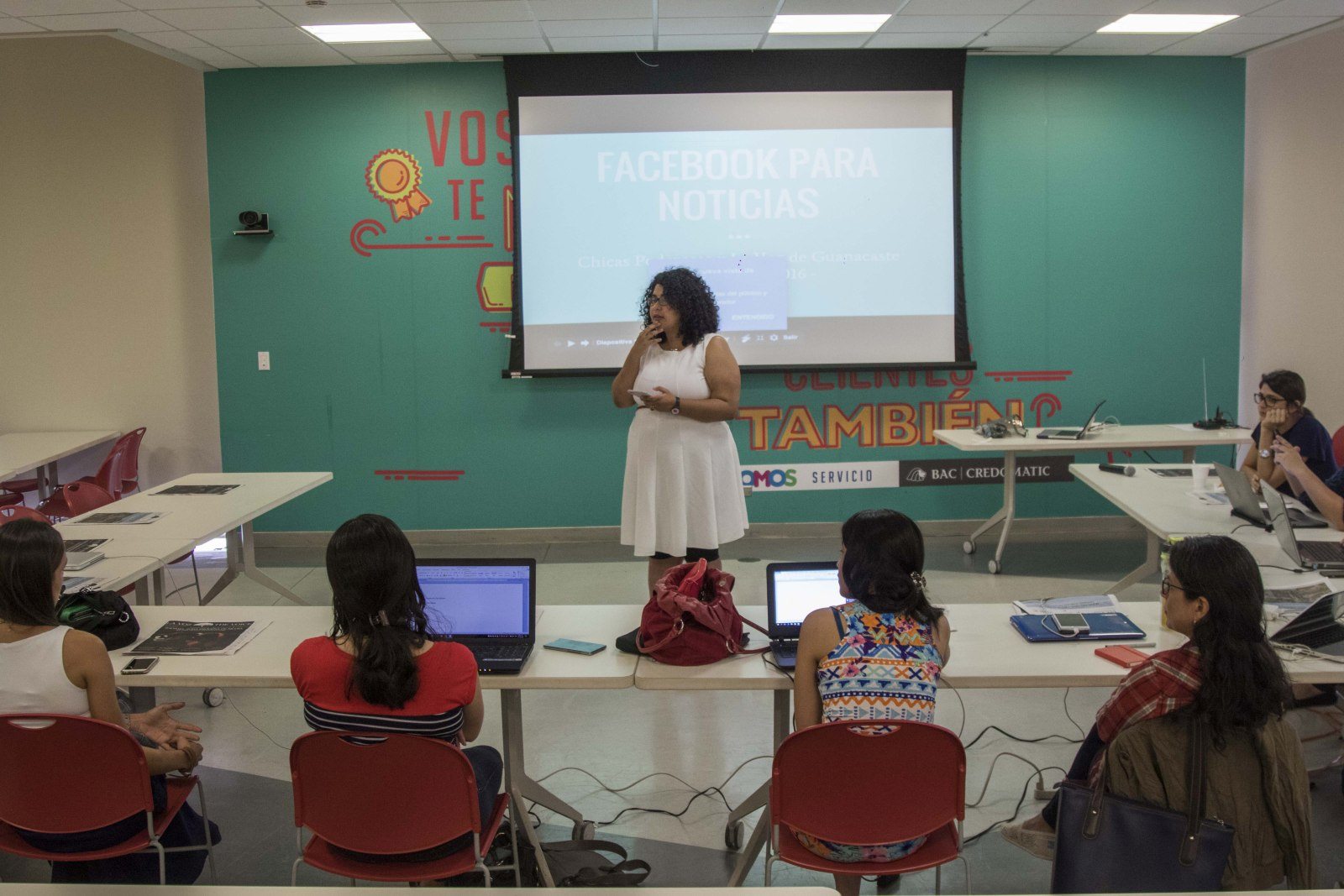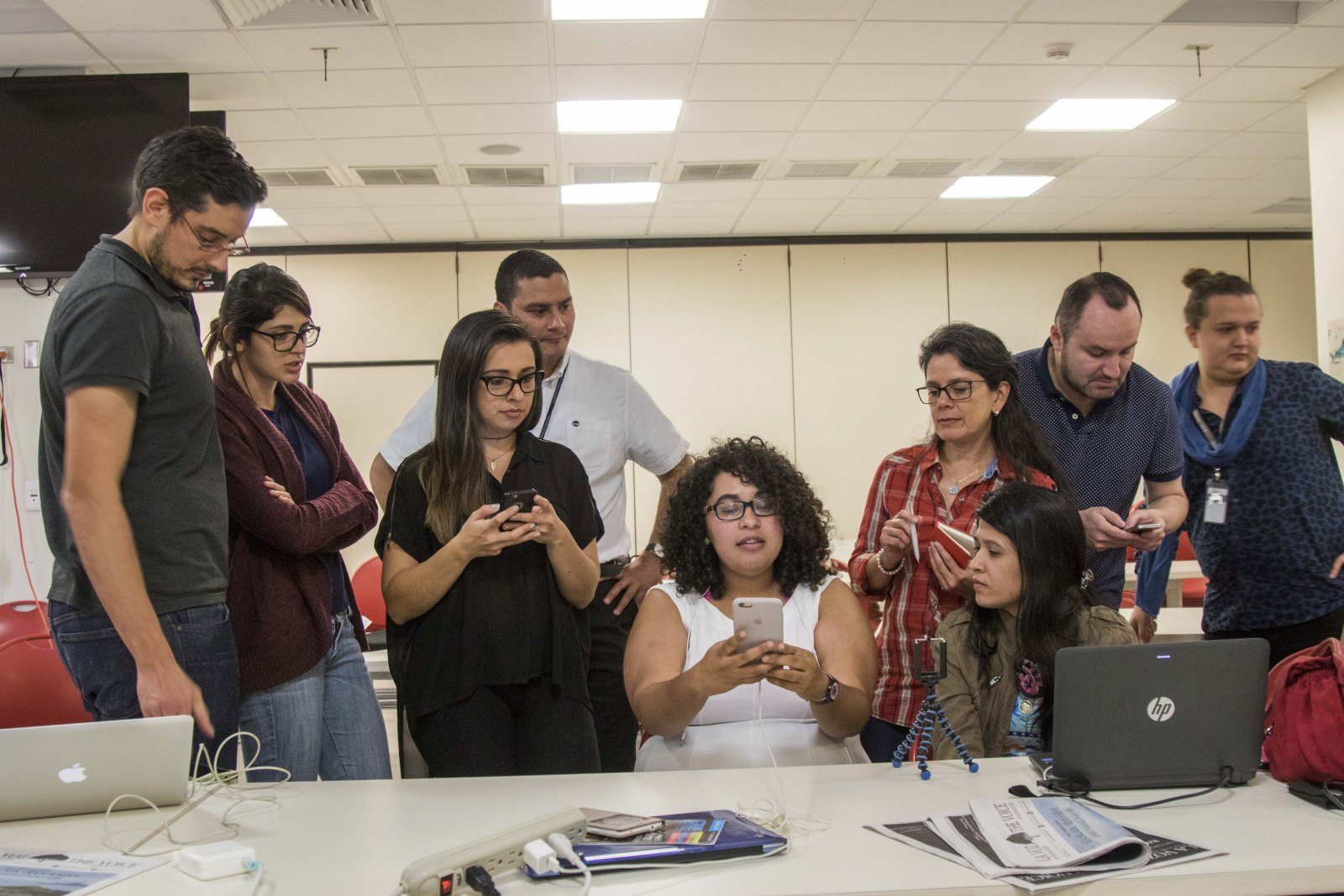
Let’s say you have a community development association or a company that provides daily content to followers on Facebook. You quite formally notify them about your organization’s progress on each project, and you share articles from your website using the most serious and impersonal language possible.
If your audience is serious and academic, you’re probably doing it correctly. But what if your followers are college students, millennials or residents in rural communities?
Colombian social media guru Mayra Báez paid the country a visit last week as a guest of The Voice of Guanacaste and Chicas Poderosas Costa Rica, leaving us with a lingering thought: Your social media profile should have a face, a personality, and above all, it should speak to your followers in language they want to hear.

¿So how do you achieve that? Getting to know your followers is the first step, but in the art and war of Facebook, many other tools exist to help you multiply followers and achieve your goals. Following are seven of those key tips:
1. Create a personality in the digital world. Getting it right isn’t only about using the appropriate language or being colloquial. Putting a real face to your social media network, creating a personality that responds to criticism and answering your followers’ questions can add tons of “Likes” and, above all, help you better interact with your public, which is what we all seek. That’s how the Bogotá mayor’s office does it, with a video series called “Loa Responde” (“Loa Responds”). Loa has become a massively popular “YouTuber” in Colombia’s capital thanks to her entertaining – and even self-criticizing – videos.
[video:https://www.youtube.com/watch?v=jvuyFoi3fKs width:500 align:center autoplay:0]
2. Imagine your ideal audience and talk like they do. Write down the characteristics of the person you believe should be your customer, reader or follower. How old are they? Do they have kids? Do they like exercise? Did they study a specific major in college? Next, meet with people who are your ideal audience and find out how they talk, what expressions they use, and even what jokes they like. People should feel that behind every post there’s a human being speaking directly to them.
3. Segment your audiences. If you have vastly different audiences, Facebook allows you to learn some of their characteristics in order to segment your messages to reach the appropriate people.
4. What’s the best way to share content? Create packages with title + text + a powerful image. Remember that the image is what most stands out. With these posts, it’s important to appeal to active – not passive – emotions: Instead of sadness, use rage; instead of happiness, use surprise or astonishment. Remember to be concise and direct. Don’t beat around the bush.
5. Try to make videos. The approach at AJ+ Español, the Facebook native media company where Báez works, is to use moving images, interviews and text or subtitles so that readers without headphones can understand the message.
Some basic tips for videos:
–Use the logo of your company or association at the end of the video, never at the beginning.
–The first image to appear should be attention grabbing.
–Always use subtitles.
–If it’s an explainer video, narrate it yourself, show your face, and talk directly to viewers, as if you’re looking them in the eye.
6. Form alliances with others like you. Sharing social media audiences is smarter than competing for them. By aligning with like-minded organizations with similar goals, you can reach a much broader public. How do these alliances work? You can mutually share posts on Facebook with a different introduction, help promote events and even post the same news on your websites, giving the appropriate credit.
7. Use resources already available on the web. Do you have to pay to achieve your goals? Having a community manager can be a big help, and you’ll likely have to pay for one. But you also can find free tools online.
Here are a few useful ones:
–Splice. Edit your own videos. Splice allows you to add subtitles and text, improve sound and edit videos from your mobile phone. The bad news is it’s only available for iPhones and iPads. The Android alternative is called Quick, but it’s not as effective.
–Slow Fast Slow. Also for videos. Slow Fast Slow converts your videos to slow motion to slow down the rhythm. It also can speed up video.
–Canvas and Infogr.am. These are available online. The former allows you to generate memes (images with text), and the second helps you create interactive graphics.







Comments